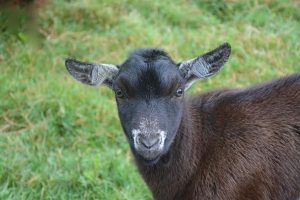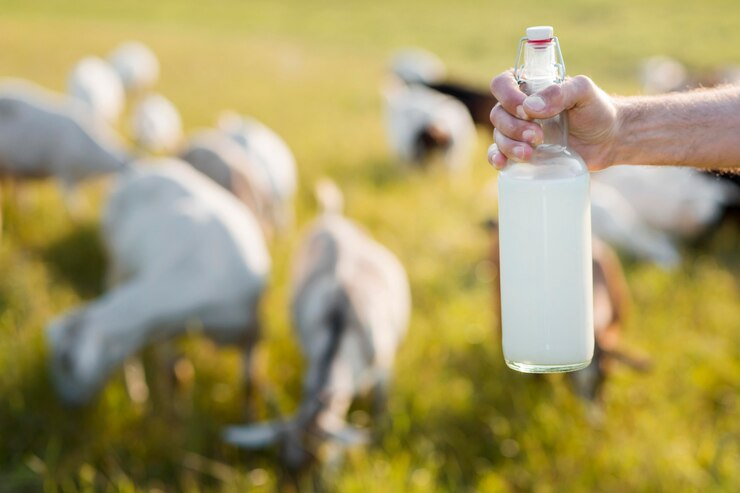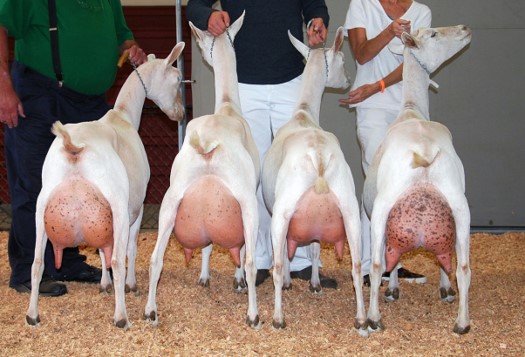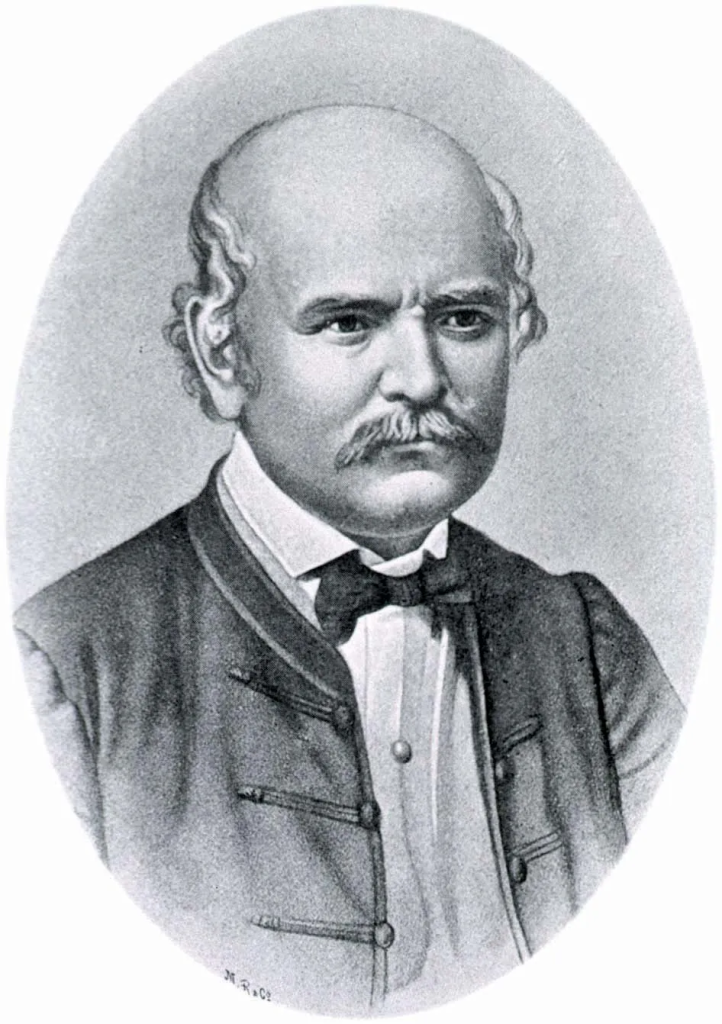I sent this document to all the MLAs and MPs in Canada. They have made a significant change in their © recommended feeding practices for infants 0 to 6 months of age.
How many ingredients are there in breastmilk and how did they get their?

Introduction
The American Academy of Pediatricians have stated the following in their Policy Statement [2012]- Breastfeeding and the Use of Human Milk.[3]
- That if infants breastfeed only, for more than four months, that hospitalized lower respiratory tract infections would be reduced by 72%.
- They also report that if infants breastfeed only for 6 months, then there would be a 63% reduction in serious colds, and ear and throat infections.
- A 64% reduction in nonspecific gastrointestinal tract infections is produced by any breastfeeding.
- A 58% reduction in necrotizing enterocolitis occurred when feeding preterm infants breastmilk.
- A 36% reduced risk of SIDS is associated with any breastfeeding.



- In the US, 900 infant lives could be saved if mothers exclusively breastfed for 6 months.
- 13% or 1 million infant deaths [world wide] yearly could be prevented with exclusive breastfeeding for 6 months and weaning after one year.
- A 27% reduction of atopic dermatitis in a low risk population and a 42% reduction in high risk populations.
- A 52% reduction in celiac disease for infants who were breastfed when gluten was first injested.
- A 31% reduction in childhood inflammatory bowel disease is associated with breastfeeding.
- A 15% to 30% reduction in adolescent and adult obesity rates is associated with any breastfeeding.
- A 30% reduction of type 1 diabetes mellitus is associated with exclusive breastfeeding at least 3 months.
- Type 1 diabetes mellitus may be caused by cow milk β-lactoglobulin.
- A reduction of 40% of type 2 diabetes mellitus is reported, possibly due to long term effect of breastfeeding on weight control and self regulation of feeding.
- Breastfeeding for 6 months or longer reduced acute lymphocytic leukemia by 20%.

The American Academy of Pediatricians issue updates to the above document every few years. They have stated the following in their Policy Statement [2022]

- If an infant is breastfed for 2-4 months, it produces a 40% lower risk of SIDS.
- If an infant is breastfed for 4-6 months, it produces a 60% lower risk of SIDS.
- If an infant is breastfed for >6 months, it produces a 64% lower risk of SIDS.
- If an infant has been breastfed, it has a 19% lower risk of infant mortality.
- If an infant has been breastfed, it has a 51% lower risk of neonatal mortality [8-27 days].
- If an infant has been breastfed, it has a 21% lower risk of post neonatal mortality.
- If an infant has been breastfed, it has a 26% lower risk of Infant mortality (7–365 days).
- If an infant has been breastfed, it has a 40% lower risk of Neonatal mortality (7–27 days)
- If an infant has been breastfed, it has a 19% lower risk of Postneonatal mortality (28–364 d).
- If an infant has been exclusively breastfed, it has a 33% lower risk of Infant mortality in developing countries compared with Predominantly breastfed infants.
- If an infant has been exclusively breastfed, it has a 79% lower risk of Infant mortality in developing countries compared with partially breastfed infants.
- If an infant has been exclusively breastfed, it has a 93% lower risk of Infant mortality in developing countries compared with infants that were never breastfed.
- If an infant has been breastfed in its first hour, it has a 25% lower risk of Infant mortality in developing countries compared to infants being fed >1st hour.
- If an infant has been breastfed exclusively for 6 months, it has a 19% lower risk of lower respiratory tract infection compared to infants being exclusively breastfed for 4 months.
- If an infant has been breastfed exclusively for 6 months, it has a 30% lower risk of severe or persistent diarrhea compared to infants being exclusively breastfed for 4 months.
- If an infant has been breastfed, it has a 33% lower risk of Otitis media than infants that were never breastfed.
- If an infant has been breastfed exclusively for 6 months, it has a 43% lower risk of Otitis media compared with infants that were never breastfed.
- If an infant has been breastfed more than another infant, then it will have a 10% lower risk of developing asthma as 5–18 year old.
- If an infant has been breastfed it will have a 12% reduced risk of developing asthma when compared to an infant that did not breastfeed.
- If an infant has been breastfed longer than another infant, it will have a 22% less risk of developing asthma. This is most protective for wheezing in first 2 years.
- If an infant has been breastfed exclusively for 3–4 months, it will have a reduced incidence of eczema in its first 2 years compared to an infant that was breastfed less.
- If an infant has been breastfed it will have a 29% reduced risk of Crohn’s disease compared to an infant that was never breastfed.
- If an infant has been breastfed for 12 months it will have a 80% reduced risk of Crohn’s disease compared to an infant that was breastfed for 3–6 months.

- If an infant has been breastfed it will have a 22 % reduced risk of ulcerative colitis compared to never breastfed infant.
- If an infant has been breastfed for 12 months it will have a 79% reduced risk of ulcerative colitis compared to an infant that was breastfed for 3 to 6 months.
- If an infant has been breastfed for <3 months, it will have a 10% reduced risk of childhood obesity compared to an infant that was never breastfed.
- If an infant has been breastfed for 3 to 5 months, it will have a 12% reduced risk of childhood obesity compared to an infant that was never breastfed.
- If an infant has been breastfed for 5 to 7 months, it will have a 17% reduced risk of childhood obesity compared to an infant that was never breastfed.


Constipation
Constipation is almost not found in breastfed infants and is associated with infant formula feeding or the introduction of solid foods.[5] [6] [7] Functional constipation is learned constipation. Hard stools are painful when anal tears occur. This leads to stool retention and harder stools. This can lead to life long problems. Functional constipation is the cause in 95% of cases in children older than 12 months.[8]
Dr. Sears states that experienced pediatricians can tell the difference between breastfed and formula fed infants, by the feel of the infants skin.[9] He also states formula fed infants; have smelly stools, patches of dry skin, less visual acuity and that the subcutaneous fat from formula fed infants is different than breastfed infants The “reduced risk percentages”[above], if infants are breastfed, are a testament to the “extra nutritional” power of breastmilk. Milk and human genetics are the vital components for infant growth.
A UN study[10] talks about a biological plausibility that ingredients in milk provide mechanisms that reduce respiratory infections and diarrhea. Some of the ingredients mentioned are oligosaccharides, immune cells, antibodies, immune modulators and growth modulators. The study also states better nutritional status when fed breastmilk as opposed to infant formula. This improved nutritional status is essential for non specific immunity. Milk is part of the picture of human growth.
Humans are omnivores. This means we can get by on a variety of foods of different origin and quality. If an infant formula can show weight gain, then it will pass an important qualification for becoming a recognized infant formula. Getting by with second best.
Breastmilk has more ingredients. This study states there are 100,000 ingredients in breast milk.[12] [13] It also states that breastmilk is “altruistic”. Infant formulas have about 50 ingredients. Breastmilk is far more sophisticated than infant formulas. It also states that milk has evolved for 200 million years of altruistic evolution. Other mammal’s milk would be put through a similar path. Goats and humans were on the same evolutionary branch for about half of their history. Mammals started out as warm blooded, nocturnal, rodent sized insectivores.
The human body is composed of bones, blood, kidneys, brains, lung, intestines, eyes, feet, skin, livers, ears, fingernails, tongues, muscles, tendons and other body parts. Goats and humans have similar body parts. These many different body parts are designed by the genetic codes of humans or goats. Since the milk from each species, can make a wide array of different body parts, then the versatility of milk would suggest that it could substitute for the others milk. There would be a greater difference, between a goat heart and a goat brain, than a goat heart and a human heart.
Goat milk can do better because its similar to breastmilk.

When comparing foods, a useful category of examination, is what do the foods do successfully? Milk has been designed by nature to build the body parts of mammals. Infant formulas have not. Nature builds better body parts. Goat milk and breastmilk are quite similar.[14] Both milks build postpartum body parts for the newborn. Amino acids are the building blocks of milk.
Milk is more than just building blocks.[17] A study[15] of the quantities of amino acids in 23 infant formulas revealed a wide difference in the amounts of each amino acid, in each formula. Why? Is it an effort to be better?
The ratio of the amount of water to the amount of energy, is important in infant feeding. Hunger triggers the need for food. The amount of energy consumed by the infant will determine the amount of water consumed. The following data shows that goat milk and breastmilk have similar water to energy ratios. Water is needed to excrete waste. Excess protein is burned like carbohydrates.
Calorie Information – Goat Milk – per 100 mls
Calorie Information – Breastmilk – per 100 mls
Carbohydrates provide 4 calories per gram, protein provides 4 calories per gram, and fat provides 9 calories per gram. [18]
How does milk become “altruistic”?
Milk is fed several times a day for several months. A lot of medicines are given on a daily basis. Because of this frequent delivery of nutrients, there is an “evolutionary opportunity” to add an ingredient to milk, that might improve the infants chances to survive and reproduce. Consider the human body’s various functions, as a series of chains. Every chain has its weakest link. If the weakest link in one of these chains got broken, it may cause the demise of some individuals or their failure to reproduce. This is an “evolutionary opportunity”. Every so often a new ingredient will be made and appear in milk.

It would be easier for nature to add an ingredient to milk, than to redesign an organ. When battling a rapidly changing bacterial world, the ability to adapt faster is beneficial. HIV transmission in breastmilk was studied. [19][20] They showed that most of the breastfeeding infants did not get infected with HIV despite months of exposure. Two possible ingredients found in breastmilk, that might be significant HIV neutralizing proteins are Tenascin-C and Soluble Tool Like Receptors 2{sTLR2}.

Each of these ingredients will have gone through many generations of successful reproduction. Harmful ingredients will not lead to successful reproduction and thus brings the end of the harmful ingredient.
Milk kicks out the bad, and remembers the beneficial. Isn’t evolution great. If the word evolution bothers some of the readers of this document, then you can think God made milk. Both sides arrive at the same place, milk is great.

The above study lists some of the 100,000 breastmilk ingredients. Goat milk ingredients are divided into beneficial categories by Young W Park.[21] He devotes a chapter of his book to the bioactive peptides found in goat milk. He talks about how digestive processes change casein into bioactive peptides, amino acids and other ingredients. Here are some of the categories of helpful ingredients.
Antihypertensive Peptides, Antioxidative Peptides, Antithrombotic Peptides, Hypocholesterolemic Peptides, Opioid Peptides, Mineral-Binding Peptides, Antiappetizing Peptides, Antimicrobial Peptides, Immunomodulatory Peptides, Cholesterol, Immunoglobulins, Angiotensin, Lactoferrin and Oligosaccharides – There are more on this list. A lot of these helpful ingredients are large molecules like lactoferrin [ 80000 atomic mass units] [22]. Milk is fragile. [23]
This picture of lactoferrin show about 24 red cork screw ribbons and 24 fat arrow structures. These structures are connected with rope/hoses. It seems that these rope/hoses connect to each other; arrow, rope/hose, ribbon, rope/hose, arrow, etc end to end, through the whole molecule. These pictures of ribbon structures, [ like the rhythmic gymnasts ribbon event] show they must be floating around in water. To dry an ingredient that normally exists in water, makes big changes in this ingredient. Lactoferrin aids in the digestion of iron and has antibacterial functions.[22] Most of these ingredients are found in the milk of other mammals. The milk from many different kinds of animals have been successfully used in human nutrition.
Walker [1965] found that 1 in 100 infants with cow’s milk allergies did not do well when fed goat’s milk, in this study of food allergies in 1460 patients. [24] The following studies; Van der Horst 1976; Taitz and Armitage 1984; Park1994; Haenlein 2004 suggest that there has been much documented and anecdotal evidence for the potential of goat milk as an effective natural, hypoallergenic, and bioactive dairy food source for human nutrition and health.[21]
This study [25] suggests that some of the fats in goat milk have become medicine for intestinal resection, pre-mature infant feeding, epilepsy, non-thriftiness of children and other illnesses. It presents a through discussion of the complexity of milk.

This study [26] recommends goat milk for infant feeding. It suggests levels of a few vitamins to be added to goat milk for its use in infant feeding. A detailed accounting of the extra ingredients in goat milk was given.
This study, [27] lists infant feeding and other benefits of goat milk.
Milk should be regarded highly. After the weakest link has been reinforced, a new weak link will appear. This new weak link will become an “evolutionary opportunity” for a new ingredient that will make this weak link stronger or adjust the situation of the weak link for its benefit. Building a better and better milk for 200 million years of mammalian evolution. Todays milk is the fittest milk and is the only food to be designed by evolution to benefit mammals.

Medical Science Questioned
A researcher of studies, says that, the research findings, of most studies are false.[28] What are their errors? This is some of what he found. The findings are frequently an accurate measure of the researchers bias. When studies have few subjects, they can draw inaccurate conclusions. Studies are more accurate when there are several thousand subjects. Inaccurate results are obtained when, there is no relationship between the variables in the study. Some studies are paid for by companies that would benefit from favorable results, they get what they want. When exciting new research is revealed, envy causes problems. I will show some published papers involving goat milk. All but one, of these studies had one subject. All of these studies also show a significant bias and confusion. There are faulty diagnosis’s in these case studies.

A large study [29] of infant formula feeding trials, looked into the behavior of the scientists involved and the reporting of the results of their trials. 14% infant formula feeding trials were not financed by the infant formula industry. 80% of studies removed data from analysis and selectively recorded data. Initial outcomes were reported as favorable in 69% of trials. Statements from the abstracts of these studies had favorable conclusions in 92% of studies.

Lone Ridge Dairy
I produced pasteurized whole goat milk for Alberta supermarkets for 17 years. Most of my consumers were infants. Frustrated mothers of screaming infants would try feeding goat milk to their infant. The screaming stopped and the infants grew well being fed goat milk. If a method of infant feeding succeeds where another method of infant feeding failed, then it should be regarded as a superior method of infant feeding, and given a recommended status for infant feeding. If better is not recognized, then you will be stuck with worse. This is valid and superior science. I would get phone calls from grateful parents stating they had a healthy child. I came to the opinion that feeding infants was goat milks place in human society.
The stores that sold my milk, knew that it took the sick out of infants. The dairy department knew. After I had fluid milk on store shelves for six months, I was visited by my Dairy Inspector and two Health Canada personal. They said, we know what’s going on. Your milk is being fed to infants and they stopped screaming. You are to be congratulated. The infants were growing well. The government was getting information on these infants from “well baby clinics”. The law below echoes the situation described above.
In 1998, Health Canada passed the following law.
INTERIM MARKETING AUTHORIZATION - IMA
Health Canada has received a submission to permit the optional addition of folic acid to goat’s milk to bring the level up that found naturally in cow’s milk. Goat’s milk is deficient in folic acid, having only about one-tenth of the level of folic acid found in cow’s milk. Provision currently exists in the Food and Drug Regulations for the addition of folic acid to evaporated goat’s milk at a higher level consistent with its potential use as an infant formula.
Health Canada has completed a safety assessment of the new proposal to add folic acid to goat’s milk and considers this request to be in the public interest. This nutrient addition is consistent with the General Principles for the Addition of Essential Nutrients to Food published in the Codex Alimentarius, under the Joint Food and Agriculture Organization of the United Nations/World Health Organization (FAO/WHO) Food Standards Programme.
This amendment will benefit industry by making it possible to render the nutritional value of goat’s milk equivalent to cow’s milk with respect to folic acid and it will increase the choice and nutritional quality of products available to consumers.
Therefore, it is the intention of Health Canada to recommend the amendment of the Food and Drug Regulations to permit the optional addition of folic acid to fluid or dried whole, skimmed or partly skimmed goat’s milk to a minimum level of 5 micrograms and a maximum level of 10 micrograms folate per 100 mL goat’s milk when ready-to-serve.
The addition of vitamins to goat’s milk continues to be optional. Nevertheless, manufacturers who choose to add folic acid to fluid or dried whole, skimmed or partly skimmed goat’s milk are also required to add the vitamins indicated under subsections B.08.029 (1) and (2) { vitamins A and D } and at the prescribed levels.
As a means to improve the responsiveness of the regulatory system while enhancing the nutritional well-being of consumers, an Interim Marketing Authorization(IMA) is being issued to permit the immediate optional addition of folic acid in goat’s milk as indicated above while the regulatory process to amend the Regulations formally is undertaken.
April 17, 1998. [32]
There are 7 statements in this document that reflect positively about goat milks use in infant feeding.
“permits the addition”
“the addition of folic acid to evaporated goat’s milk”
”safety assessment”
“in the public interest”
“it will increase the choice and nutritional quality of products available to consumers.”
“ manufacturers who choose to add folic acid to fluid or dried whole, skimmed or partly skimmed goat’s milk are also required to add the vitamins indicated under subsections B.08.029 (1) and (2) and at the prescribed levels.”
“This nutrient addition is consistent with the General Principles for the Addition of Essential Nutrients to Food published in the Codex Alimentarius, under the Joint Food and Agriculture Organization of the United Nations/World Health Organization (FAO/WHO) Food Standards Programme.
FOLIC ACID
Pre-Market Authorization
Mr. Clark Lysne
Dear Mr. Lysne:
Thank you for your correspondence of July 25, and August 16, 2016, concerning goat milk and its use as a human milk substitute. The Honourable Stéphane Dion, Member of Parliament for Saint-Laurent, the Honourable Kent Hehr, Member of Parliament for Calgary Centre and the Honourable Chrystia Freeland, Minister of International Trade, have also forwarded copies of your correspondence. I regret the delay in responding.
Thank you for taking the time to share your perspective on the use of goats milk as a human milk substitute for infants.
The premarket submission you referenced (file #: 2015-013239, SAP #: 4000573) is still an active and open submission with Health Canada awaiting your response. Consequently, I would encourage you to continue working directly with officials through the established regulatory submission evaluation process.
As you are aware, infant formula manufacturers are required to comply with the requirements under Part B, Division 25 of the Food and Drug Regulations and it is the responsibility of all manufacturers, importers and distributors of infant formula to ensure that their products comply with Canadian legislation. As per the regulations, Health Canada conducts a rigorous science-based assessment of all new infant formulas before they can enter the Canadian marketplace. Scientists with expertise in molecular biology, microbiology, toxicology, chemistry and nutrition conduct a thorough analysis of the scientific data available. The Department’s top priority when making decisions based on these mandatory assessments is the health and safety of Canadians.
…/2
251 Sir Frederick Banting Driveway Tunney’s Pasture, A.L. 2202E Ottawa ON K1A 0K9
October 21, 2016
-2-
Should you believe that the standards within Division 25 do not reflect the best available scientific evidence, you may submit a regulatory amendment request to change the permitted levels of a nutrient, or to allow the addition of currently non-permitted nutrients to infant formula. Regulatory amendment requests should be accompanied by a clear definition of the proposed request, a rationale for the proposed changes to the regulations and data in support of the request—including results of tests and scientific analysis that demonstrate that the food, after the addition of the nutrient(s) at the proposed level(s), would not be harmful to the health of the infant. Requests can be submitted to:
Submission Management Information Unit
- Food Directorate, Health Products and Food Branch, Health Canada 251 Sir Frederick Banting Driveway
- Address Locator 2202E
- Ottawa, Ontario K1A 0K9
- E-mail: smiu-ugdi@hc-sc.gc.ca
- Phone: (613) 960-0552
- Fax: (613) 946-4590
Again, thank you for writing and expressing your concerns. Thank you for writing.
Yours sincerely,
Karen McIntyre
Director General, Food Directorate
“Should you believe” from the above letter, is a major achievement on my part, too bad it only lasted a few months. It disappeared.
Chiropractors
THE INGREDIENTS OF INFANT FORMULAS
There are around 50 ingredients in infant formulas. Infant formula containers [in Canada] have 2 lists of ingredients. One is called “ingredients” and the other is called “nutrition information”. The “ingredients” list is what is in the container. An “ingredients” list may contain; palm olein, mixed tocopherol concentrate, choline chloride, ferrous sulphate and other ingredients.
The “nutrition information” list is basically the “29 essential nutrients”. A few nutrients are divided into categories. It contains ingredients that people recognize, like Vitamin A, iodine, iron, niacin and the others. It is implied that the ingredients on the “ingredients” list transforms into the ingredients on the “nutrition information” list. For instance, the ferrous sulphate turns into the iron on the “nutrition information” list. There is no sulphur in the “nutrition information” list. Several ingredients on the “ingredients” list are a combination of two ingredients.
Several of the ingredients on the “nutrition information” list are found in goat milk.
Cow’s Milk Problems
Cows milk has significant problems when used for infant feeding. Cow’s milk allergy is the most common food allergy in infants.[39]
There are several immunological mechanisms of cows milk allergies. Bovine beta-lactoglobulin is one of these problems. It creates allergy symptoms such as; colic, constipation, rash, diarrhea, itching, cramps, hives, nausea and swelling around the throat or face. Beta-lactoglobulin is not found in breastmilk. [40] Bovine alpha 1 casein, an allergen is readily passed through milk membranes into the milk.[41]
Beta-lactoglobulin is largely accountable for cow milk allergy.[42] Goat milk feeding has resolved the problems of cows milk allergies.[42] Humans will benefit from studies into goat milk’s hypoallergenic and therapeudic significants.[42]
In order to reduce the incidence of cows milk allergy or protein intolerance in infant formula, infant formula manufactures break milk proteins into smaller less allergenic pieces.[43][44]
Food intolerances are some foods that the body has trouble dealing with, making digestion difficult. Cows milk is one of the most common producers of intolerance problems. [45]
Another problem of cow’s milk, is its casein, which makes thick and indigestible curds, in the infants stomach.[46]
Another draw back of cow’s milk is that it is associated with colic. Colic appears in 25% of infants. A sensitivity to cow’s milk protein is a main cause of colic.[47] This article also states that the sugar in infant formulas can be a cause of colic. This study states that an alternative for infants is soy based formulas and about 1/2 of infants that are allergic to cow’s milk are also allergic to soy.
The next step in understanding why infant formulas fail, is an examination of how infant formulas are made.

Shelf life
Infant formulas are made, so that they last at room temperature, on store shelves, for long periods of time. This is not a good idea. Milk is such a great creation, that its best left alone. It cannot be improved. It is not stable. Making it stable, makes it into something else. Look at the ingredients on a container of infant formula.
Hydrolyzed proteins
Hydrolyzed proteins are milk proteins, that have been broken into smaller pieces. This is done by; processing with salt, processing with enzymes, processing with high pressure water, processing with chemicals, processing with heat, or processing with acid. Heat treatments caused significant reductions in protein digestibility.[48]

DRYING - THE COLLAPSE OF THE RIBBONS
Most infant formulas are a dried formula. The drying process is not a benign process. A large amount of heat is passed through the milk in order to evaporate the water. Five times the amount of energy is required for the latent heat of evaporation, than is required to heat water from 0 C to 100 C. An evaporator using heat and vacuum sucks about half the water out of the milk. Then the milk droplets are sprayed [ at speed of 50 m/s] into air with a temperature of 150 to 300 degrees C. The drying time is 5 to 100 seconds. The air outlet temperature is from 50 to 100 degrees C.[53]
Water supports the ingredients in milk. The twirling ribbon structures of lactoferrin, have come crashing down, along with its benefits. For a lactoferrin molecule this is violence beyond comprehension. It’s an ugly introduction to gravity. The water is vaporized. Cool and wet to hot and dry. Violence means harm. Sometimes the lactose is included in the drying process. This is another questionable practice.
This study [54] about the negative effect on protein quality from spray drying, talks about Maillard reactions degrading and conversion of L- to D- AA.
This study [55] mentions that infant formulas have higher levels of protein than breastmilk. The protein is a lower quality, so more is added bolster the supply of essential amino acids. The study also states that heat processing of infant formula affects protein digestibility. It is a huge assumption to believe that rehydration will restore the proteins to their previous quality. The proteins will not get put together properly so that the digestive processes can take them apart properly. The atomic weight of some common amino acids varies from 89 to 204. They are the building “bricks” mentioned earlier. These are not large molecules compared to lactoferrin at 80,000 atomic mass units. One lactoferrin molecule can be divided into 392 of the largest amino acid molecules or 899 of the smallest amino acid molecule.
Membranes
There are filtering machines that can remove water from milk. Pressurized milk is pushed at a membrane with small holes. The holes are so small, they allow for the passage of water molecules through the membrane. After the milk has gone through the membranes the proteins, fats and other milk ingredients pass out of the membrane machine. Other membranes are different sizes to do different tasks. These machines could harm the nutrients in milk. Some of the ingredients could get caught in the pressurized holes. This may cause large molecules to break apart. The fragility of these large molecules can be seen by looking at pictures of them Their beautiful. The building of the pressure that the milk is under could be harmful to milk ingredients. Extreme high pressure has been used to pasteurize and homogenize milk. If it destroys bacteria, if harms other ingredients also. Reverse osmosis, ultrafiltration, diafiltration and microfiltration are kinds of membrane technology.
Hydrolyzed Whey Proteins
Great Medical Disasters of the Past
Bloodletting has a long history, it was well established in Greek times. The reasons changed over time, but the surgical procedures remained similar. [57] Bloodletting was treatment for a wide variety of diseases. Convincing arguments against bloodletting appeared mid 19th century. These ideas did not died a quick death. By 1900 it was largely gone. In 1942 the last positive references in medical text books, for bloodletting, disappeared.


Dr. Ignaz Semmelweis, a Jew, observed, in the mid-19th century, that maternal death due to child bed fever was often 10 to 20 times higher in hospitals, than birthing by midwives or home delivery. Women had a fear of hospitals. Just this simple observation, by Semmelweis led to the asking of the right questions. The doctors would do post mortem examinations and then deliver babies. A doctor friend’s hand was cut by accident while doing an autopsy. The doctor died of the same symptoms as the autopsy patients. The light bulb clicked on. He got his juniors to clean their hands with bleach, until they didn’t smell. The death rate plummeted. Many doctors were offended, when shown they were the cause of many ugly deaths. These doctors hounded Dr. Ignaz Semmelweis. He didn’t do well after this rejection.[58] He is known as “the savior of mothers.” He laid the basis for the development of the germ theory of disease. It took a long time before his ideas were recognized.
Elizabeth Kenny was a solitary nurse in the outback of Australia before WW1, when she encountered polio. She was not familiar with polio treatments, which were immobilization with splints while walking. By herself, using her instincts, she treated affected muscles with heat, stretching, massage and movement. She treated patients and re-educated dormant muscles. Many of these patients got to throw away their braces and walk again. She pioneered muscle rehabilitation and physical therapy.[59] Rejected by the medical establishment in Australia, a teaching institute was established in the US.
Louis Pasteur was a student of Ignaz Semmelweis. Pasteur developed vaccines for rabies and anthrax. He developed germ theory. These three did not get nobel prizes in medicine. Two were not doctors. They were chided by the medical establishment. It is not hard for groups of people to be wrong about something. It is the nature of groups to perpetuate their practices. Infant formulas have been around for over a century.
Doctors are repair people as opposed to building it right from the start.
A “warning label” was attached to this email when delivered to the Members of provincial assemblies and other recipients of my emails. Google attached the message. I didn’t know until Danielle Barkhouse [NS vice Premier] emailed me asking for a different form of the email. I did this. She replied and related her experience. Her first 2 children were breastfed, no problems. She could not breastfed her third. She had problems with her third. She got behind my message and told people. The Mlas had a look, it was discussed at a meeting of Provincial Premiers. I received an email from the Premier of BC. The provinces pay for 2/3 of health care costs and had asked the federal government for more money. They were stiffed. I sent the email to all Canadian MPs. Then there was another meeting including federal officials. Then there was another meeting of Health Canada and provincial Ministers of health.
Previously, in Dec 2022 blocks were established on my apple computer, my facebook account, my microsoft computer, my linkedin pages and my login at the US copyright registration. I appealed these blocks and won. It is my suspicion that Health Canada established these blocks.
It is my assumption that there is a vigorous debate going on because my ideas are different from established health professionals.
I feel there is real opportunity here, and my part is to explain to the Canadian public that goat milk is better for their infants. I would do this by getting Canadians to read this letter. Please help.
